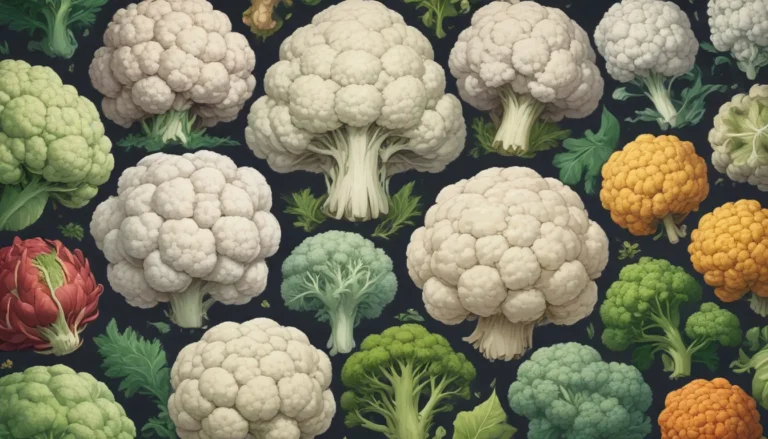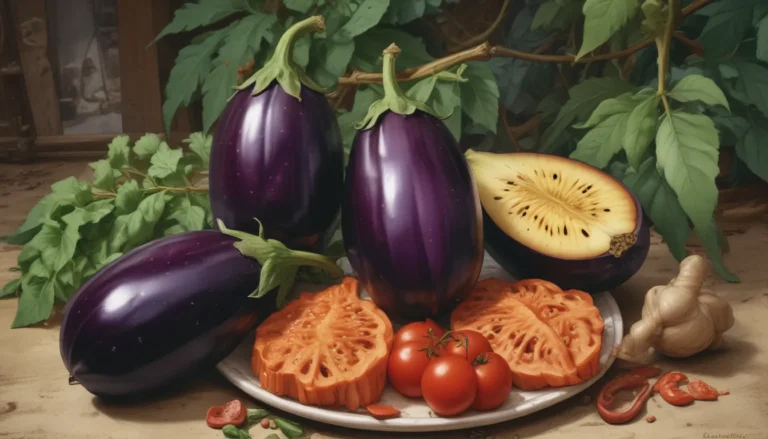Everything You Need to Know About Growing Cayenne Peppers

Are you a fan of spicy food? Have you ever wondered where that zesty flavor in your favorite dishes comes from? It might just be the fiery cayenne pepper.
These slender, red chilis are not only great for drying and making hot sauce, but they also have a unique citrusy, smoky flavor when eaten fresh. If you’re adventurous enough to take on the heat, growing cayenne peppers in your garden can be a rewarding experience.
In this comprehensive guide, we will cover everything you need to know to successfully cultivate your own cayenne peppers. From the history of these fiery chilis to tips on growing, pruning, and selecting the best cultivars, we’ve got you covered. So, roll up your sleeves and get ready to spice up your garden with some cayenne power!
What You’ll Learn
- Cultivation and History
- Propagation
- How to Grow
- Growing Tips
- Pruning and Maintenance
- Cultivars to Select
- Managing Pests and Disease
- Harvesting
- Preserving
- Recipes and Cooking Ideas
- Quick Reference Growing Guide
But first, let’s start with understanding more about cayenne peppers and their rich history.
What is Cayenne?
Cayenne peppers come in a variety of shapes, sizes, and heat levels. They are generally slender, red chilis that pack a punch. Cayennes are about five to 10 times hotter than a jalapeno, measuring around 30,000 to 50,000 Scoville Heat Units (SHU).
From ‘Buena Mulata’ with its color-changing fruits to ‘Espana’ that’s milder than other cayennes, there are several cultivars to choose from. Whether you prefer the traditional ‘Ring of Fire’ for extra heat or the colorful ‘Purple’ for a striking appearance, there’s a cayenne pepper for everyone.
Why Grow Cayenne Peppers?
- Versatile in the kitchen
- Easy to grow from seed
- Heat levels can be adjusted based on fruit maturity
Cultivation and History
The origin of the name “cayenne” is somewhat unclear, with the chili possibly named after the city in French Guiana where it was first cultivated. The term “cayenne pepper” dates back to the 17th century when it was mentioned in herbalist Nicholas Culpeper’s writings.
Propagation of cayenne peppers from seed is simple, making it a popular choice for home gardeners. By starting seeds indoors about eight to 12 weeks before the last frost date, you can ensure a successful growing season.
How to Grow Cayenne Peppers
Plant your cayenne peppers in full sun with well-draining soil. Reduce watering after fruit set to enhance heat levels. Cover plants in clear plastic if temperatures drop below 70°F to protect them from the cold.
Pruning and maintenance of cayenne plants are minimal, with most varieties being self-sustaining. However, you may need to provide support for larger cultivars with exceptionally heavy fruits.
Cayenne Pepper Cultivars to Select
There is a wide selection of cayenne pepper cultivars available, each with its own unique characteristics and heat levels. From ‘Golden’ with its golden yellow skin to ‘Joe’s Long’ with foot-long fruits, there’s a cayenne pepper for every taste preference.
Some Notable Cultivars:
- Dragon
- Ring of Fire
- Red Ember
- Sweetness
- Thick
Managing Pests and Disease
While cayenne peppers are generally resilient to pests and diseases, they can still be affected by common issues like aphids, bacterial spot, and mosaic virus. Proper plant care, crop rotation, and pest control measures can help prevent these problems.
Common Pests and Diseases:
- Aphids
- Bacterial spot
- Mosaic virus
- Blossom-end rot
Harvesting and Preserving
Once your cayenne peppers reach their mature color, they are ready to harvest. You can choose to dry them, pickle them, freeze them, or pack them in oil for long-term preservation.
Keeping Your Cayennes Fresh:
- Hang them to dry
- Dehydrate them in a dehydrator
- Pickle them for a tangy twist
Recipes and Cooking Ideas
Cayenne peppers are versatile in the kitchen, adding a smoky heat to a wide range of dishes. From classic chili to sweet macarons, these fiery chilis can spice up any recipe. Experiment with different cayenne pepper cultivars to discover new flavors and heat levels.
Cooking Suggestions:
- Chili
- Pulled pork
- Mac and cheese
- Vinaigrette
Quick Reference Growing Guide
Use this quick reference guide to ensure optimal growth conditions for your cayenne peppers. From planting depth to companion planting recommendations, this guide has everything you need to grow healthy and thriving cayennes.
Quick Reference:
- Plant Type: Short-lived perennial vegetable
- Water Needs: Moderate
- Hardiness (USDA Zone): 8-11
- Season: Summer
- Exposure: Full sun
- Time to Maturity: About 90 days
- Spacing: 1 inch
- Height: 2 feet
- Spread: 18 inches
Spice Things Up
Growing cayenne peppers can be a fun and rewarding experience for gardeners of all skill levels. With a wide variety of cultivars to choose from and endless culinary possibilities, cayennes offer endless opportunities for experimentation.
Whether you’re a seasoned gardener or a beginner looking to add some heat to your garden, cayenne peppers are a great choice. So, get ready to spice things up and enjoy a bountiful harvest of fiery chilis!
Share Your Thoughts!
How do you like to use cayenne peppers in your recipes? Have you tried growing different cayenne pepper cultivars? Feel free to share your experiences and cooking tips in the comments below!
In conclusion, growing cayenne peppers can be a rewarding experience for any gardener. With the right knowledge and techniques, you can enjoy a bountiful harvest of zesty chilis that will spice up your dishes and add a unique flavor to your meals. So, get started on your cayenne pepper journey today and transform your garden into a fiery paradise!





